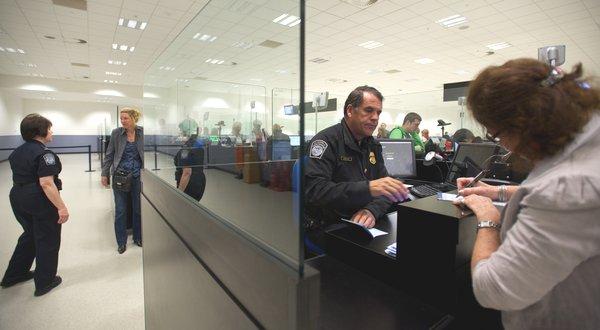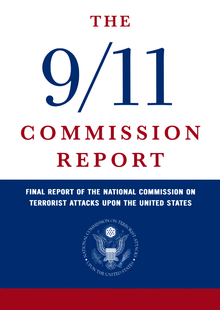
Recently, “Border Wars” blogger Todd Miller was in the Dominican Republic to conduct research for his forthcoming book, Border Patrol Nation (to be published by the Open Media Series of City Lights Books). While there, he interviewed numerous individuals associated with CESFRONT, the Dominican Republic’s “Specialized Border Security Corps” (Cuerpo Especializado en Seguridad Fronteriza).
Established in 2006, the agency’s purpose, states a U.S. Government cable from January 10, 2010, is “in part to curb the entry of undocumented and illegal migrants across the Haitian-Dominican border.” It is a task in which Washington—specifically the U.S. Department of Homeland Security’s Customs and Border Protection (CBP) agency—takes a strong interest. According to the cable, the U.S. government had “recently sent two CBP agents to the CESFRONT Academy to give technical advice and provide border security expertise to CESFRONT officials and new officers.”
The provision of “advice” and “expertise” seems to be ongoing: one high-level CESFRONT official told Todd Miller that the agency was soon to participate in a training seminar (scheduled for August 20-22) in Santo Domingo, the Dominican capital, involving members of the U.S. Border Patrol.
Such collaboration is not unique to the Dominican Republic. Indeed, central to the Department of Homeland Security’s work is the enrolling of other countries in the effective extension of U.S. perimeter policing. A New York Times article from June 21, for instance, opens by talking about an international airport “[a]n ocean away from the United States”: that of Shannon, Ireland. There, the paper reports, travelers “are confronting one of the newest lines of defense in the war on terrorism: the United States border.”
The international section of the airport has an area specifically for the U.S. Department of Homeland Security. Within, and after passing through the Irish government’s security checkpoint, “passengers are screened for explosives and cleared to enter the United States by American Customs and Border Protection officers before boarding.” This allows them to avoid immigration and customs checks once they arrive in the United States proper.
Thus far, 14 countries are involved in this DHS program—with varying levels of participation. In airports in Madrid, Panama City, and Tokyo, for instance, U.S. authorities reportedly provide “advise” to their local counterparts. At others, U.S. officers help to expedite travel for those regarded as “low risk.” And then there’s what U.S. officials refer to as the “gold standard”: airports (like Shannon) where comprehensive pre-boarding inspection takes place. (Abu Dhabi has agreed to build an airport terminal that will allow DHS to do the same.)
The impetus for these measures grew out of the 9/11 attacks and subsequently intensified in the face of unsuccessful attempts by allegedly Al Qaeda-affiliated individuals to blow up U.S.-bound aircraft originating in airports abroad.
The broad intellectual justification is contained in the conclusion of the Final Report of the National Commission on Terrorist Attacks Upon the United States (more popularly known as the 9/11 Commission Report). There, the bi-partisan group of authors offers its worldview: “In the post 9/11 world, threats are defined more by the fault lines within societies than the territorial boundaries between them. From terrorism to global disease or environmental degradation, the challenges have become transnational rather than international. That is the defining quality of world politics in the twenty-first century.”
Three paragraphs later, the report states that “9/11 has taught us that terrorism against American interests ‘over there’ should be regarded just as we regard terrorism against Americans ‘over here.’ In this same sense the American homeland is the planet.”
Such an attitude—that the U.S. “homeland” goes beyond the country’s internationally-recognized boundaries—is an old one. It helped to legitimate U.S. empire-building in the 19th and 20th centuries, and serves as part of the ideological infrastructure justifying what some have called the country’s “empire of bases” that litters the planet.
More narrowly, this informs U.S. efforts to “push out” its boundary enforcement regime—a project that has roots far deeper than 9/11. In the mid-1980s, for example, the Reagan administration pressured the Mexican government to bolster its policing of the Mexico-Guatemala border to stymie the movement of refugees fleeing the horrific violence of (U.S.-backed) military regimes—especially in Guatemala and El Salvador.
In the July/August 2002 issue of the Bulletin of Atomic Scientists, Michael Flynn penned a very important article in this regard. Entitled, "¿Dónde Está La Frontera?" ("Where’s the Border?"), it examined how “the United States has been putting increasing pressure on its southern neighbors to stem migration flows by securing their borders, developing regional migration strategies, tightening visa restrictions, and participating in multilateral operations ostensibly aimed at breaking up the lucrative trade in people smuggling.”
The resulting practices, Flynn shows, have to led to militarized borderlands, increasing human rights abuses, and the criminalization of migrants. It has also led to the effective “outsourcing” of U.S. detention as Washington gets other countries to detain unauthorized migrants long before they reach U.S. shores.
Part of this involves the deployment of the U.S. Coast Guard (now part of the Department of Homeland Security). The Coast Guard’s “national security” mandate was significantly expanded in the early 1990s under Presidents George H.W. Bush and Bill Clinton to allow for interdiction and repatriation of unauthorized immigrants at sea and participation in the fight against “alien smuggling.”
Haiti has long been a target of such operations. While CESFRONT (with the help of CBP) focuses on the Dominican Republic’s land boundary with Haiti, the U.S. Coast Guard is involved with policing Haitian shores. In one of the ugliest episodes, the United States deployed 16 Coast Guard ships near Haiti in the aftermath of the deadly earthquake in January 2010.
As discussed by Todd Miller on the NACLA website, a U.S. Air Force plane flew over the country five days after the earthquake and played a pre-recorded message in Haitian Creole telling people not to try and leave the devastation and head to the United States. “They will intercept you right in the water and send you back home where you came from,” the recording warned.
Clearly the endless and boundless fight against terror serves as the primary justification for the ever-widening scope of U.S. boundary enforcement. Nonetheless, the efforts to contain migrants from Haiti (among many other countries) reveal what more importantly underlies such efforts is the maintenance of a profoundly unequal world order divided along axes of race, class, and nation.
If, indeed, the “the American homeland is the planet,” U.S. officials are working to ensure it is one in which a beknighted and privileged “we” have maximum mobility, while undesirable “others” face ever-more-formidable obstacles to their movement.
This is the central boundary of the 21st century.
For more from the Border Wars blog, visit nacla.org/blog/border-wars. And now you can follow it on twitter @NACLABorderWars.

